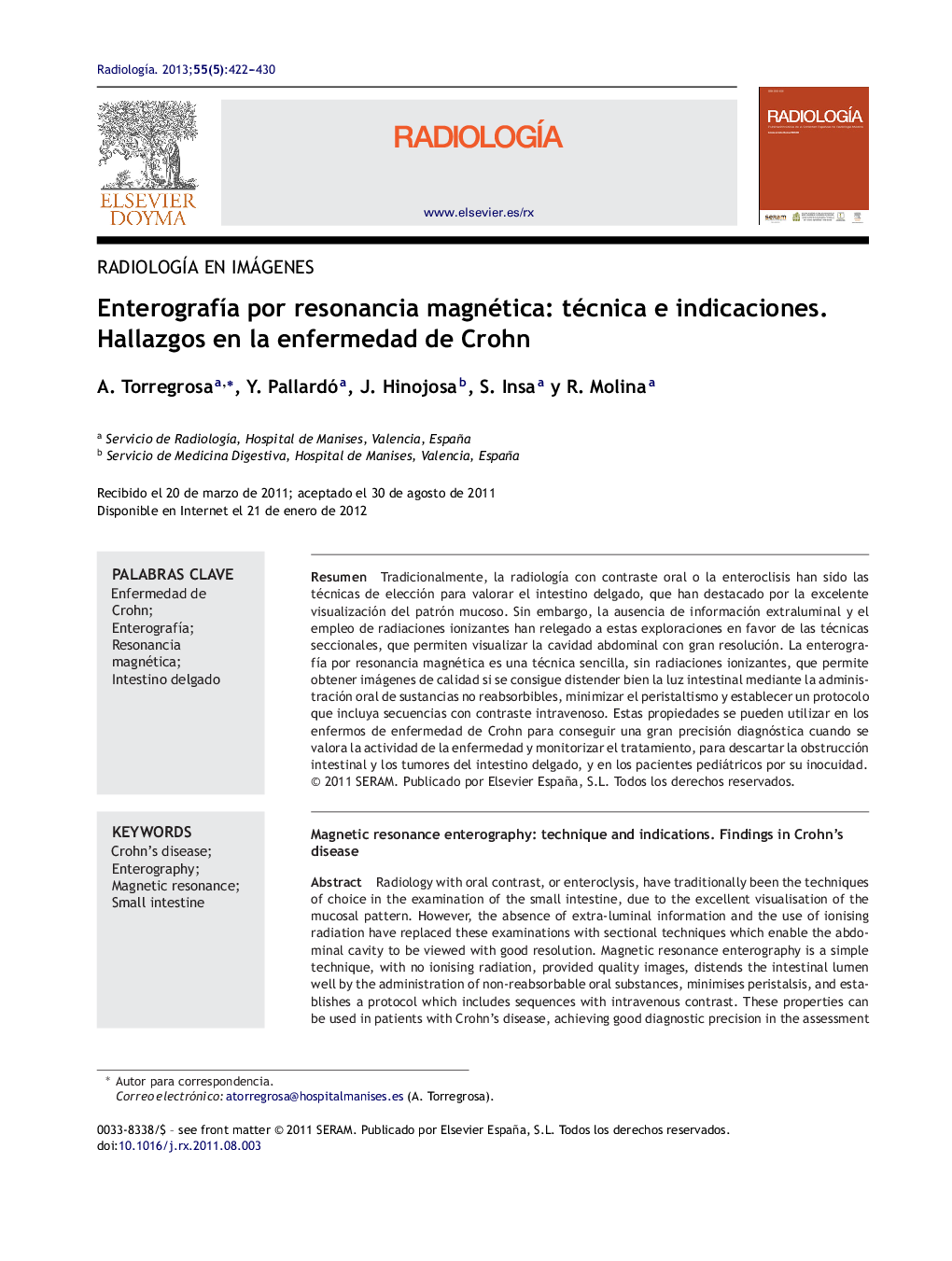| Article ID | Journal | Published Year | Pages | File Type |
|---|---|---|---|---|
| 4245446 | Radiología | 2013 | 9 Pages |
Abstract
Radiology with oral contrast, or enteroclysis, have traditionally been the techniques of choice in the examination of the small intestine, due to the excellent visualisation of the mucosal pattern. However, the absence of extra-luminal information and the use of ionising radiation have replaced these examinations with sectional techniques which enable the abdominal cavity to be viewed with good resolution. Magnetic resonance enterography is a simple technique, with no ionising radiation, provided quality images, distends the intestinal lumen well by the administration of non-reabsorbable oral substances, minimises peristalsis, and establishes a protocol which includes sequences with intravenous contrast. These properties can be used in patients with Crohn's disease, achieving good diagnostic precision in the assessment of activity and monitoring of treatment, in intestinal obstruction, in the suspicion of small intestine tumours, and in paediatric patients due to it being harmless.
Keywords
Related Topics
Health Sciences
Medicine and Dentistry
Radiology and Imaging
Authors
A. Torregrosa, Y. Pallardó, J. Hinojosa, S. Insa, R. Molina,
